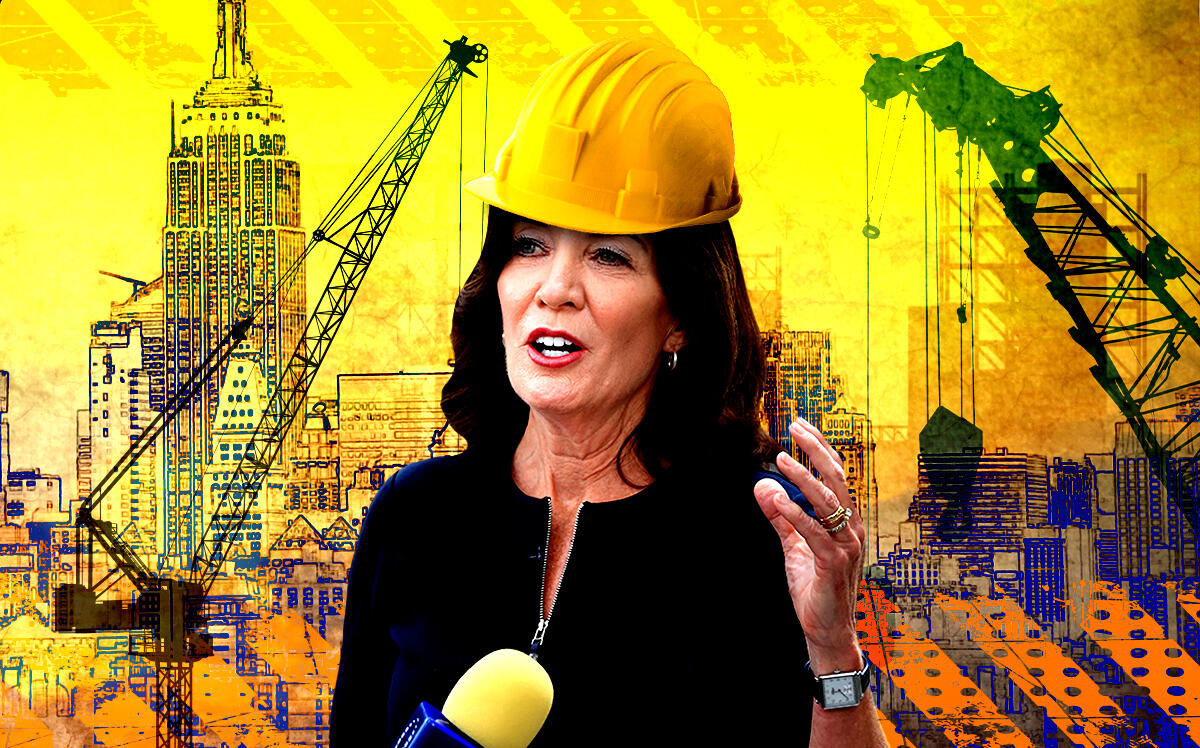 Plan B for 421a
Plan B for 421a
Trending
Hochul to localities: Build more housing or get out of the way
Governor outlines policy agenda in second State of the State address

Gov. Kathy Hochul on Tuesday laid out a plan that allows New York localities to build more housing on their own terms — or face the possibility of state intervention.
The “New York Housing Compact” sets separate three-year housing targets for upstate and downstate municipalities to meet the governor’s goal of building 800,000 new housing units in the next decade. Administration officials shared details of the proposal ahead of Hochul’s second State of the State address.
The plan sets targets of 3 percent growth in housing stock every three years for downstate localities and 1 percent for those upstate. In calculating growth, more weight is given to affordable housing and rehabbed units.
Towns and cities that fail to meet the targets can secure a three-year grace period if they enact certain policies to encourage housing growth, including legalizing accessory dwelling units, upzoning and eliminating exclusionary zoning measures.
If they don’t, a “fast track” approval process kicks in, whereby projects with more than 20 units and a specified number of affordable apartments will be approved “even if existing zoning restrictions do not allow it.” A state-level appeals process will be created in cases where localities do not automatically approve such projects, which can only be denied for health or safety issues.
Under the plan, municipalities with MTA rail stations would be required to rezone areas within half a mile of the stop, allowing for at least 25 homes per acre. The proposal includes $250 million in funds to help with infrastructure needed to accommodate increases in density.
The plan follows the lead of other states, including California and Massachusetts, which have measures allowing housing projects to circumvent local zoning restrictions. Hochul has said that New York is behind its neighbors in building new homes and called the state a “national leader in blocking housing.”
Representatives for the administration acknowledged Tuesday that the success of the plan — which seeks to double the number of housing units created in the past decade — partially hinges on the revival of a tax break akin to the expired 421a program. The administration, however, believes such an incentive is needed for less than a quarter of the additional units that would be created as part of the plan.
The governor has indicated that she is committed to working with the legislature to find a replacement for 421a, but is not putting forward her own proposal. As part of her executive budget last year, Hochul laid out a potential successor, 485w, which failed to gain support from lawmakers.
Hochul will also propose legislation that will “expand the universe” of commercial buildings in New York City that can be converted to residential use, according to a policy book released Tuesday. This would likely include changes to ease the conversion of buildings constructed before 1991. The city’s Office of Adaptive Reuse estimates that this would pave the way for the conversion of 120 million square feet of office space.
The governor will also propose a new property tax exemption to incentivize the inclusion of affordable housing as part of these conversions.
Read more
 Plan B for 421a
Plan B for 421a
 Gov. Yimby? Hochul promises housing blitz next year
Gov. Yimby? Hochul promises housing blitz next year
 With 421a dying, apartment project financing “has come to a stop”
With 421a dying, apartment project financing “has come to a stop”
Hochul is also seeking to revive proposals from last year, including a measure that would lift the city’s cap on residential floor-area ratio and another that would grant the city the authority to legalize basement apartments. The latter is a watered-down version of an earlier proposal that would have required localities to permit accessory dwelling units on lots zoned exclusively for single-family homes. That measure lost steam after it was criticized for stripping localities of control over zoning.
The governor’s policy agenda does not appear to include good cause eviction or a state-level housing program, which are being championed by the Housing Justice for All campaign. The administration’s focus on creating housing, at all income levels, will likely not sit well with more progressive members of the state legislature who have focused on ramping up social housing and tenant protections.




